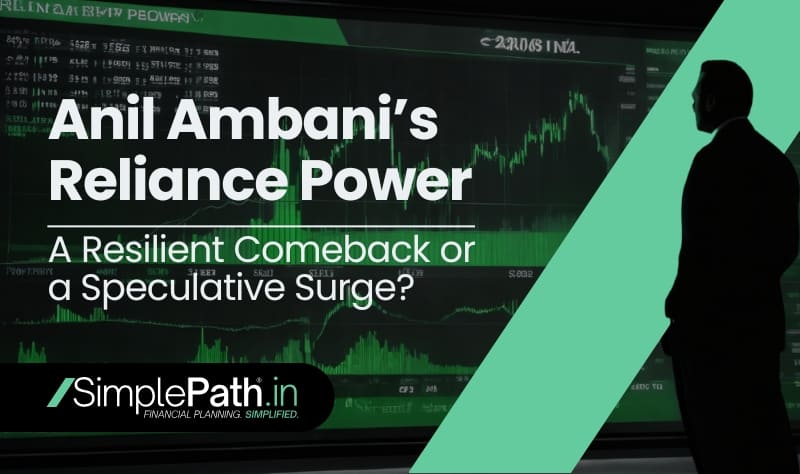Anil Ambani was once one of the richest men in the world. His business empire spanned telecom, energy, infrastructure, and finance. Over the past decade, however, he witnessed a dramatic fall from grace—marked by bankruptcies, regulatory sanctions, and financial missteps. But 2024–25 has brought a resurgence, particularly through Anil Ambani’s Reliance Power and Reliance Infrastructure. Is this comeback real or fleeting? Let’s explore the full story.
A Brief History of Reliance Power
Founded in 1995, Anil Ambani’s Reliance Power became a household name in India after the 2005 split between the Ambani brothers. In January 2008, the company launched India’s biggest-ever initial public offering (IPO), raising over ₹11,500 crore. It was one of the most anticipated listings in Indian corporate history, and investors lined up in droves (Economic Times, 2008).
However, excitement quickly turned to disappointment. On the day it got listed, the stock fell by 17%, indicating a sharp mismatch between investor expectations and actual performance.
The company had set out with grand ambitions—planning to develop over 28,000 megawatts of electricity generation capacity. These plans included three ultra-mega power projects (UMPPs): Sasan in Madhya Pradesh, Krishnapatnam in Andhra Pradesh, and Tilaiya in Jharkhand. But many of these projects faced serious delays due to regulatory hurdles, issues with coal supply, and land acquisition problems. As a result, many projects were stalled or shelved (LiveMint, 2014), pushing the company deeper into debt and draining investor confidence.
Anil Ambani: From Billionaire to Battling Bankruptcy
At his peak in 2008, Anil Ambani’s net worth was estimated at over $40 billion, placing him among the world’s wealthiest individuals. But over time, a string of poor business decisions, high debt levels, and market disruptions eroded his fortune.
His telecom company, Reliance Communications, went bankrupt. His finance arm, Reliance Capital, entered insolvency. In a stunning declaration to a UK court in 2020, Anil claimed he had “zero net worth” (BBC, 2020). In 2024, SEBI (India’s securities regulator) barred him from the securities market for five years for alleged financial misconduct in Reliance Home Finance (SEBI Order, 2024).
Despite all this, 2024 and 2025 have shown signs of a surprising comeback.
The Comeback: What’s Fueling the Rally?
1. Anil Ambani’s Reliance Power’s Financial Recovery
Reliance Power has posted impressive financial results that signal a turnaround:
- In Q4 FY25, the company reported a consolidated net profit of ₹126 crore. This was a major reversal from the ₹397 crore loss it suffered in Q4 of the previous year.
- In Q2 FY25, it reported an even more striking profit of ₹2,878 crore. This came largely from strategic settlements and the monetization of certain assets.
- The company also repaid a significant portion of its outstanding debt. For example, it cleared ₹3,872 crore in obligations for Vidarbha Industries Power Ltd, and repaid a $150 million loan for Sasan Power—an ultra-mega power project (Business Standard, 2025).
2. Shift to Renewable Energy
Reliance Power is aligning with the global shift toward clean energy:
- It was awarded a 350 MW solar project by SJVN Ltd. This includes a substantial Battery Energy Storage System (BESS) of 175 MW / 700 MWh (Mercom India, 2025).
- With these and other initiatives, Reliance Power now claims to be India’s largest company in the solar and battery storage segment, with 2.4 GW of solar capacity and 2.5 GWh of battery storage.
3. Reliance Infrastructure’s Parallel Growth
Reliance Infrastructure, another key company in the group, has also seen positive momentum:
- Between September and November 2024, its market capitalization rose from ₹8,500 crore to ₹12,500 crore.
- Its stock price climbed 60%, hitting ₹336—its highest in six years.
- More impressively, the company slashed its standalone debt from ₹3,831 crore to just ₹475 crore (CNBC TV18, 2024).
However, the story took a sudden twist:
On June 2, 2025, the National Company Law Tribunal (NCLT) admitted an insolvency plea against Reliance Infrastructure. The plea was filed by Dhursar Solar Power, which claimed unpaid dues of ₹88 crore. Reliance Infrastructure has since claimed that it paid ₹92.68 crore and is appealing the decision in the National Company Law Appellate Tribunal (NCLAT) (GoodReturns, 2025).
Strategic Capital Infusion
Anil Ambani raised substantial funds in 2024 to steer his companies out of debt and into growth sectors:
- ₹4,500 crore via preferential equity
- ₹7,100 crore through Foreign Currency Convertible Bonds (FCCBs) from Varde Partners
- ₹6,000 crore raised through Qualified Institutional Placements (QIP)
These funds were used to reduce liabilities and fund strategic growth in clean energy and defense (IndiaSpeakDaily, 2024).
The Family Factor
Anil Ambani’s sons—Jai Anmol and Jai Anshul—are playing increasingly important roles:
- Jai Anmol is involved in strategic decision-making and public engagements.
- Jai Anshul is focused on the financial services arm, managing insurance and asset management businesses (IndiaSpeakDaily, 2024).
The Defense Play
Reliance Defence, a subsidiary of Reliance Infrastructure, is partnering with Germany’s Rheinmetall AG to build a defense manufacturing hub in Ratnagiri, Maharashtra, named “Dhirubhai Ambani Defence City” (Defense News India, 2025).
Market View and Investor Sentiment
- As of June 3, 2025, Reliance Power was trading at ₹58.89, down 4.97% in intraday trading.
- Just a day earlier, on June 2, it had touched a 52-week high of ₹62.80.
- The stock has more than doubled since March 2025 (Moneycontrol, 2025).
Risks to Watch
- Regulatory Sanctions
- Execution Risks
- Legal Uncertainties
- Volatile Market Sentiment
Conclusion: Between Resilience and Risk
Anil Ambani’s story is one of extremes—from wealth to downfall and now resurgence. While Reliance Power and Infrastructure show promise, investors must be cautious amid legal and market volatility.
Disclaimer: This article is for informational purposes only. Please consult a SEBI-registered advisor before making investment decisions.





